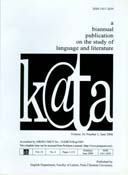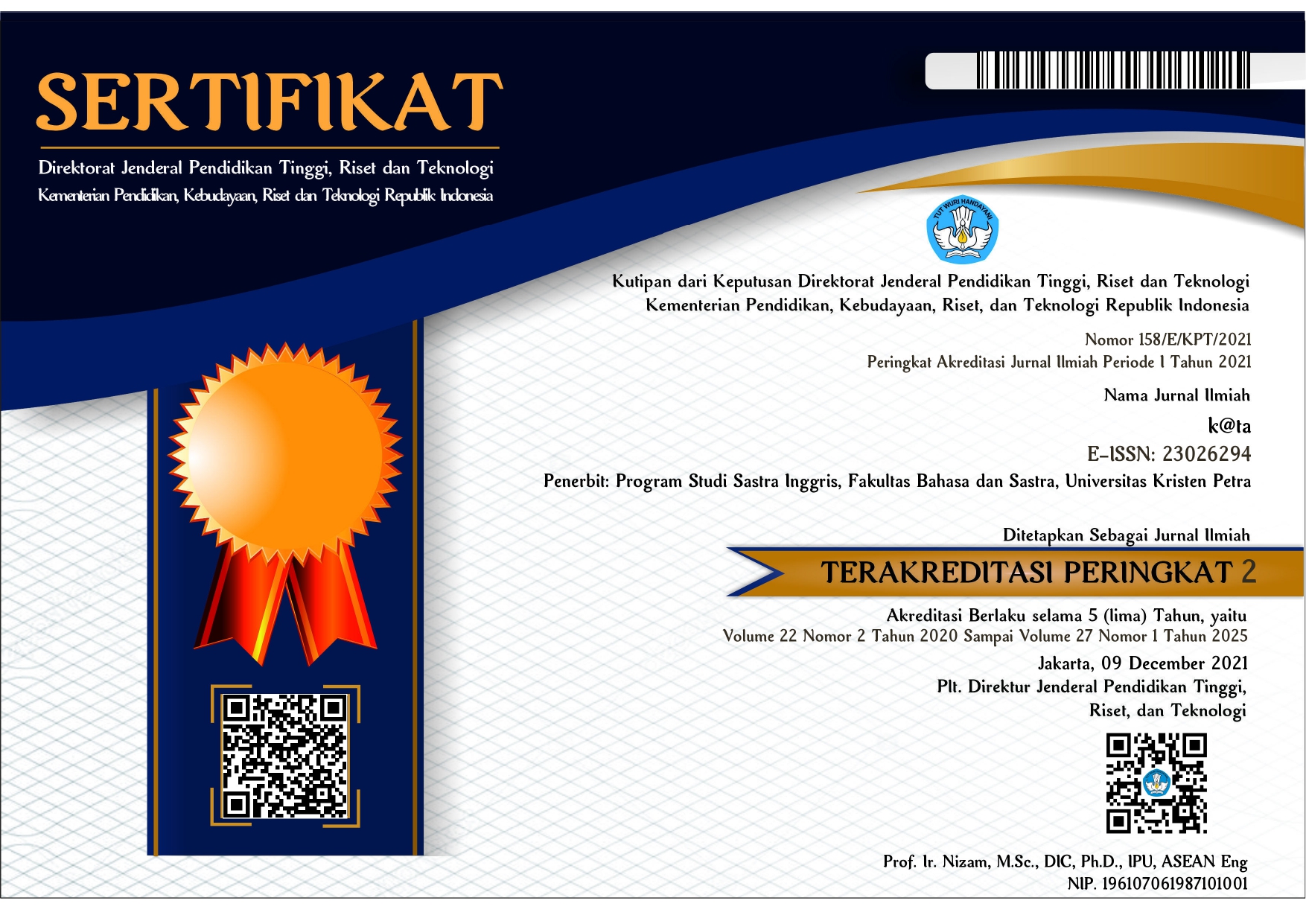On the Acquisition of English Voiceless Stop VOT by Indonesian-English Bilinguals: Evidence of Input Frequency
DOI:
https://doi.org/10.9744/kata.20.2.45-52Keywords:
VOT value, native and non native inputs, bilingual childrenAbstract
The paper attempts to investigate the acquisition of Voice Onset Time (VOT) of voiceless stop consonants of English /p/, /t/, and /k/ by Indonesian-English bilingual children in its close relation to how second language (L2) input shapes the L2 VOT production. It looks at two different groups of children with native and non native input environment; (1) one 6-years-old girl receiving extensive exposures of English natives from YouTube in about 8 hours per day since she was two in addition to having interactive communication in English with her family members (2) four students (aged 7-8 years old) enrolling in English Partial Immersion Program with non-native environment of English. The comparative analysis concludes that the VOT values differ significantly across different inputs. The children with non native input acquired much shorter VOTs falling within the average of 28 – 36 ms, while those with native input could achieve native-like VOTs in the average of 69 ms for /p/ and /t/ and even longer for stop consonant /k/.
Downloads
References
Abutalebi, J., & Clahsen, H. (2017). Bilingual language acquisition: The role of input and experience, Bilingualism: Language and Cognition, 20(1), 1-2. DOI: 10.1017/S1366728916001164
Carrol, S.E. (2015). Explaining bilingual learning outcomes in terms of exposure and input, Bilingualism: Language and Cognition, 20(1), 37-41. DOI: 10.1017/S1366728916000511
De Houwer, A. (2011). Language input environments and language development in bilingual acquisition. Applied Linguistics Review, 2(Volume 2), 221–240. http://doi.org/doi:10.1515/9783110239331.221
Fabiano-Smith, L., & Bunta, F. (2012). Voice onset time of voiceless bilabial and velar stops in 3-year-old bilingual children and their age-matched monolingual peers. Clinical Linguistics & Phonetics, 26(2), 148–63. http://doi.org/10.3109/02699206.2011.595526
Hauser-Grüdl, N.., Arencibia Guerra, L., Witzmann, F., Leray, E., & Müller, N. (2010). Cross-linguistic influence in bilingual children: Can input frequency account for it? Lingua, 120(11), 2638–2650. http://doi.org/10.1016/j.lingua.2010.06.008
Kehoe, M.M, Lle, C., & Rakow, M. (2004). Voice onset time in bilingual German-Spanish children. Bilingualism: Language and Cognition, 7(1), 71–88. http://doi.org/10.1017/S1366728904001282
Ladefoged, P., & Johnson, K. (2011). A course in phonetics. Australia: Wadsworth Cengage Learning.
Lee, S. A. S., & Iverson, G. K. (2012). Stop consonant productions of Korean-English bilingual children. Bilingualism: Language and Cognition, 15(2), 275–287. http://doi.org/10.1017/S1366728911000083
Netelenbos, N., Li, F., & Rosen, N. (2015). Stop consonant production of French immersion students in Western Canada: A study of voice onset time. International Journal of Bilingualism, 20(3), 346–357. http://doi.org/10.1177/1367006914564566
Paradis, J., & Genesee, F. (1996). Syntactic acquisition in bilingual children: Autonomous or independent? Studies in Second Language Acquisition, 18, 1–25.
Pearson, B.Z. (2007). Social factors in childhood bilingualism in the United States. Applied Psycholinguistics, 28, 399– 410.
Place, S., & Hoff, E. (2015). Effects and noneffects of input in bilingual environments on dual language skills in 2 ½-year-olds. Bilingualism: Language and Cognition, 19(July), 1–19. http://doi.org/10.1017/S1366728915000322
Downloads
Published
How to Cite
Issue
Section
License
![]() This work is licensed under a Creative Commons Attribution License
This work is licensed under a Creative Commons Attribution License



.png)
.png)

















